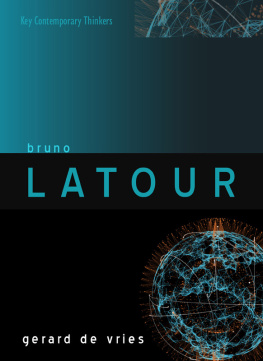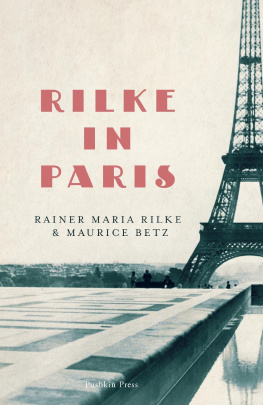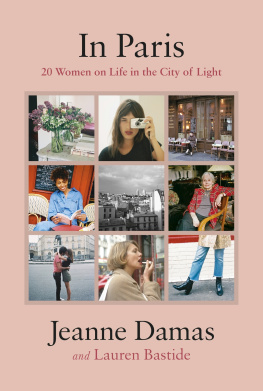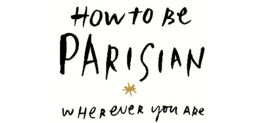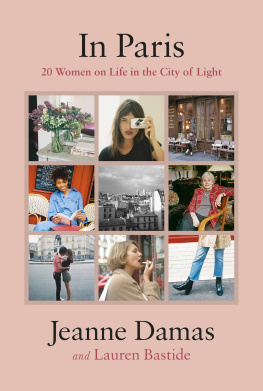Paris Savant

Oxford University Press is a department of the University of Oxford. It furthers the Universitys objective of excellence in research, scholarship, and education by publishing worldwide. Oxford is a registered trade mark of Oxford University Press in the UK and certain other countries.
Published in the United States of America by Oxford University Press
198 Madison Avenue, New York, NY 10016, United States of America.
Armand Colin 2011
All rights reserved. No part of this publication may be reproduced, stored in a retrieval system, or transmitted, in any form or by any means, without the prior permission in writing of Oxford University Press, or as expressly permitted by law, by license, or under terms agreed with the appropriate reproduction rights organization. Inquiries concerning reproduction outside the scope of the above should be sent to the Rights Department, Oxford University Press, at the address above.
You must not circulate this work in any other form and you must impose this same condition on any acquirer.
Library of Congress Cataloging-in-Publication Data
Names: Belhoste, Bruno, author. | Emanuel, Susan, translator.
Title: Paris savant : capital of science in the age of Enlightenment /
Bruno Belhoste ; translated by Susan Emanuel.
Description: New York, NY : Oxford University Press, 2018. | Translation of
the French language edition of: Paris savant : parcours et rencontres au
temps des Lumieres (Paris : Colin, 2011). | Includes bibliographical
references and index.
Identifiers: LCCN 2018045239 | ISBN 9780199382545 (hbk) | ISBN 9780199382569 (epub)
Subjects: LCSH: ScienceFranceParisHistory18th century. |
ScientistsFranceParisBiography. | Paris (France)Intellectual
life18th century.
Classification: LCC Q127.F8 B4413 2018 |
DDC 509.44/09033dc23
LC record available at https://lccn.loc.gov/2018045239
Contents
Figures
Maps
In this wonderful book, Bruno Belhoste, a noted historian of science at the Sorbonne, gives us a sweeping panorama of Paris in the decades leading up to the French Revolution in which scientists take center stage. For what Belhoste aims to demonstrate is both that Paris was the capital of the sciences at the end of the eighteenth century and that the conduct of science and scientists created a dynamic that pulsed through the city: cutting across its many neighborhoods old and new, cutting through and creating surprising bonds within a hierarchical social order, and offering a new vitality to a monarchy that did not know it was doomed.
We start near the center of the city, in the old palace of the Louvre, which had been vacated by the royal court when Louis XIV moved it to Versailles at the end of the seventeenth century and was now, to the kings glory, the meeting place of his academies, including the Academy of Sciences. We follow the academicians or savants about their business into every quarter of Paris and its suburbs: across the Seine to the Paris Observatory and the Royal Botanical Garden (now the Jardin des Plantes) and then to the schools and print shops of the Latin Quarter. We follow them too into the fashionable neighborhoods, mostly on the right bank, where they mingled with le monde and les grandsthe social and political elite of high aristocrats, wealthy financiers, and government officialsin mirrored salons and well-appointed dining rooms. Members of this powerful elite might serve as patrons for the savants, but they validated and supported them in other ways too: by opening their natural history collections to them or attending the public courses they offered in physics, chemistry, and natural history. We then follow the crowd out to the new boulevards on the northern and western edges of the city where science was a form of spectacle and good business, where education met theater, and where commerce, science, and entertainment fueled each other. Returning to the center we spend many happy hours in the Palais Royal, whose arcades and gardens had been turned into a microcosm of this modern Paris by its royal owner, the Duke de Chartres. In the Palais Royal dealers in scientific instruments sold their wares in fashionable shops next door to theaters, cabinets of curiosities, and cafs; above them were private rooms in which members could meet in clubs to pursue shared interests and discuss new ideas; and above them were much smaller rooms to which prostitutes brought the men they met in the gardens after dusk. We are now back almost where we began: just across the rue Saint-Honor from the Louvre, the vast caravanserai that housed painters, sculptors, architects, engravers, literati, and scientists, as well as a multitude of rats. But here in the Palais Royal we are not peeking inside the closed doors behind which the privileged producers of culture lived and worked; here, as Belhoste shows us, science was for everyone, and we experience the pleasure and excitement of the men and women from all walks of life who participated in it.
I suggest that you read Paris Savant in a comfortable chair but with a laptop or tablet nearby so that you can locate the places to which Belhoste takes you on a map of Paris. Although a few street names have changed and some buildings have disappeared, for the most part you will find Paris Savant on Google Maps: the Louvre, of course, and the Palais Royal, where in 1784 the inventors Quinquet and Lange displayed their new oil lamps for the admiration of the public at Daguerres fashionable shop. Farther along the rue Saint-Honor is the townhouse where Madame Geoffrin brought together men of letters, savants, and wealthy amateurs at her Wednesday dinners for more than two decades. You can also follow the path of fresh water flowing into the center of Paris from the new steam pumps at Chaillot on the right bank of the Seine and the Gros-Caillou on the left bank. Best of all, you can imagine the city from above as you climb into the basket of the hydrogen balloon that ascended to the clouds from the Champs de Mars on August 27, 1783, and landed eighteen miles away in the village of Gonesse.
The social reach of Belhostes Paris Savant matches its geographic reach, extending as far beyond academicians as it does beyond the Academy. It includes the inventors of oil lamps and hydrogen balloons, the makers of scientific instruments, and the public of women and men who read books and periodicals, took public courses, and were captivated by the spectacle of science set before them in theaters, balloon launches (the crowd on the Champs de Mars was said to number one hundred thousand), and the tubs of magnetic fluid with which Dr. Mesmer cured all manner of people of all manner of illnesses.
Belhoste shows us a world in which rivalries could certainly be fiercebetween inventors of rival oil lamps, for example, or editors of competing dictionariesbut this dynamic world was also driven by public spiritedness and a zeal for improvement. The passion for science and the passion for the public good were, if not the same, closely entangled. And the sense of importance that inflated the egos of the savants was due in part to their belief that the work of science was itself important. Belhoste devotes a whole chapter to the problems of public health that beset Paris at a time when migrants streaming into the city were making its population increasingly dense, but its infrastructure remained largely unchanged since the Middle Ages. In the 1770s and 80s the government turned to the savants to address these problems. Should Pariss oldest hospital, which served both the sick and the poor, simply be rebuilt after it suffered a catastrophic fire in 1772? Or did the tragedy provide an opportunity to implement design reforms that reflected current understandings of disease and contagion? The savants were consulted, but entrenched interests blocked the reforms they proposed. In 1776, the reforming pharmacist Cadet de Vaux issued a report (probably at the behest of the lieutenant of police, according to Belhoste) in which he concluded that the air around the Cemetery of the Innocents, located in the same quarter as the central market, was the least healthy air in Paris. Although an attempt was made to suppress the report, the cemetery was closed in 1780, after reports of cadaverous gases that were affecting public health began to circulate. Over the course of six months, and in the dead of night so as not to upset the neighbors, the cemeterys contents were moved to a site outside the city limits that had been dug to accommodate them. These are the catacombs that tourists visit today.





